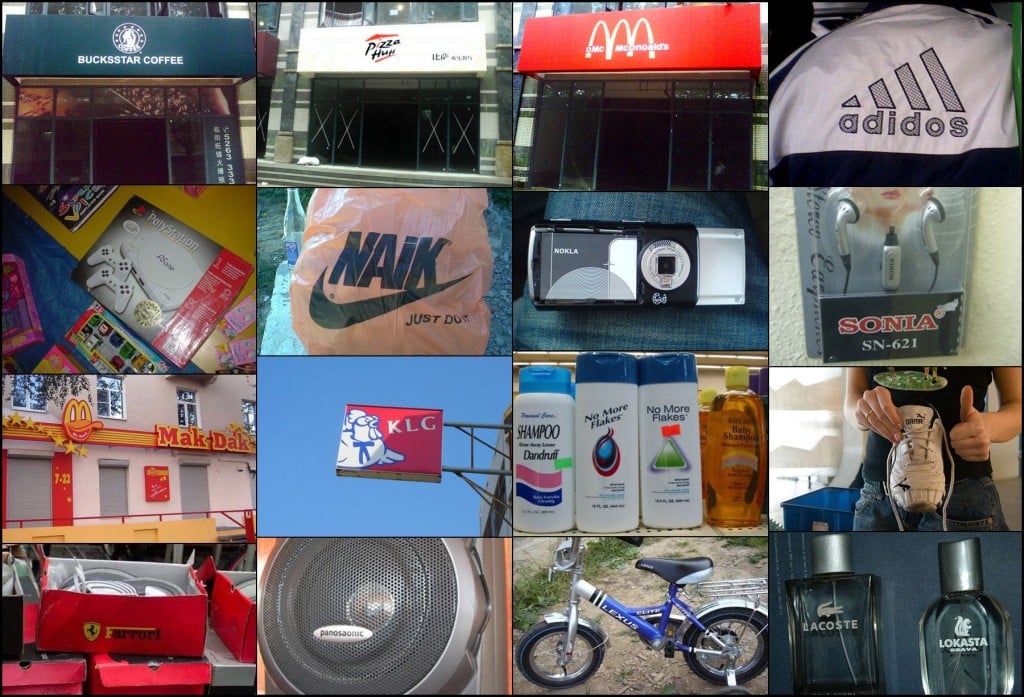
You are probably familiar with knockoff brands as they relate to the fashion world—designer shoes, handbags, and luggage passed off as the real deal. Well, I have some bad news: knockoff products can affect any industry, and globalization and the rise of digital shopping only make it easier for imitators. From the competitor next door to the online seller on the other side of the world, chances are increasingly high that at some point you’ll face problems with cheap imitations trying to undercut your prices. Here’s how to deal with them.
The Knockoff Wave
It’s tempting to think of knockoffs as an overseas problem. But figures show that knockoffs cost American businesses around $250 billion per year.[1. “The Facts on Fakes!” http://www.narts.org/i4a/pages/index.cfm?pageid=3313] It’s easy to imitate a product, especially if you are careless about quality.
Few industries are exempt. Shampoo companies face imitators that sell copied products with off-market or dangerous ingredients. Toys and clothes are regularly counterfeited, especially when it comes to online or bargain shopping. And counterfeits aren’t always about brand appeal or copying trademarks, either. The auto industry is haunted by knockoff cheap brake pads that pose dangers to drivers. As a restaurant, you may be astounded to find a restaurant down the street has copied your menu and sells cheaper, faster versions of the same meals.
All these imitations are poison to your brand, and contribute to a marketing measurement called “the false discovery rate.” This refers to how often consumers discover an imitation instead of your real product. The higher the false discovery rate, the more customers you lose before they even reach your brand.
Trying to fight in court can be expensive, time-consuming, and very dicey depending on patent or copyright laws. Taking the fight out into the market is dangerous too, because knockoffs tend to succeed, at least at first, with their cheap prices. When you can’t come near competing on price, what can you do?
They Can’t Fight Quality
You may have heard the term “customer churn,” that slow attrition of customers over time through various causes. When dealing with knockoffs, customer churn is actually your best friend. Did you know that this dreaded churn is primarily caused by poor customer service? Customers who report a poor service experience are even more likely to leave for a competitor than those who are unhappy with prices or product quality.[2. “Turning on customer loyalty,” http://www.bain.com/publications/articles/turning-on-utility-customer-loyalty.aspx]
That’s right: By offering better service and higher quality products, you can siphon customers from your imitators and win your old customers back. If you started reading this post looking for tricks or a quick fix, unfortunately, there isn’t one. Luckily, quality and service always trumps knockoffs.
The market is filled with examples of companies that have turned the tide against imitators. Whole Foods made a big stand against imitators this year when it announced the launch of its “365” store line, which targets a younger, lower-income demographic than its traditional audience.[3. “Whole Foods Plan to Beat Out its Imitators,” http://chicagodefender.com/2015/05/31/whole-foods-plan-to-beat-out-its-imitators/] In recent years, the grocery giant had begun to lose its hold on the market for natural groceries as more competitors flooded the market hoping to capitalize on the trend. By changing marketing tactics and focusing on a new demographic, Whole Foods seems to be regaining its throne as the king of natural foods.
Other companies may take a head-on approach to imitators. Fiber and composite manufacturer Honeywell directly warns customers of knockoffs on their website, and draws attention to quality control of their brand names.
Some companies use imitators to their advantage. As this excellent post on the economics of knockoffs from Freakonomics points out, brands like Adidas benefit from passive quality control because customers who really want quality already know to skip the knockoffs. Their brand—those three little black stripes that tell a customer it’s the real deal—acts as a filter, attracting only trustworthy and serious consumers.
The themes are easy to recognize: Don’t worry about beating imitators on price, because affairs with price are fleeting. Customer loyalty is directly related to customer service, so prove that you are a company that cares about customers.
Using Quality as a Weapon
We can see that customer churn can bring customers back to you even if they are distracted by imitators. But what about inspiring customers to choose your brand over knockoffs from step one? Here are some of the most effective weapons to bring back old customers and encourage new customers to try your product instead of knockoffs.
Remember: According to YESCALATE®‘s second law of Getting to Yes, it’s your job to provide these additional reasons to consider your business. Without these reasons, customers will always default to looking at the price – it’s just human nature. So present these reasons to go for your brand, front and center:
- Customer support: Provide customers with 24-hour service, contact with real representatives, and easy contact info including chat, telephone numbers, and email. Most importantly, make sure you respond to all complaints and answer any questions in a timely manner.
- Warranties: Warranties and return policies are often not supported by imitators. Draw attention to them to highlight your differences.
- Customization: Can customers change colors, features, delivery methods or—and this is very important—payment methods? Imitators often cannot offer these choices, and usually don’t provide much in the way of financing. Make it easy for customers to take the first step with payment plans, zero-interest deals, multiple payment options (“buy using PayPal now!”), and customization options.
- Product Guides: How do you use a product? What do you do when something goes wrong? Draw customers in with more information by providing product guides, online resources, blogs, FAQs, and more. Quality content will show who’s really the best. Old Navy, for example, has a entire campaign dedicated to teaching customers about quality design, why quality is worth paying for, and how to avoid imitators.[4. “How to Defend Your Designs Against Knockoffs,” http://www.entrepreneur.com/article/225171.]
Brand Power with YESCALATE®
Use the YESCALATE® way to fight the imitators and convince customers that you are the real deal with a quality product. YESCALATE®’s art of persuasion can help you to emphasize what really matters to customers—quality, service, and options—while drawing attention away from price and reducing customer risk.
You can GET TO YES FASTER® by identifying exactly what customers need and using the right phrasing and topics at the right time. YESCALATE® has perfected the ways to tap into the customer psyche in the most effective ways. With YESCALATE®’s methods of winning the customer over, combined with your superior value offering, you’ll never need to worry about those imitators again.




